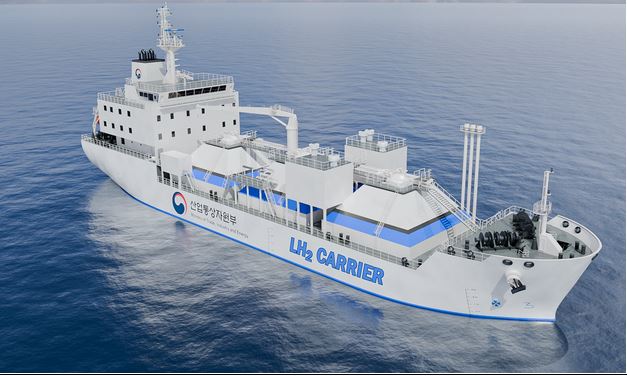South Korea's Strategic Push: Developing a Cutting-Edge Liquefied Hydrogen Carrier
Key Ideas
- South Korea establishes a public-private task force to develop a liquefied hydrogen carrier, leveraging its LNG carrier technology expertise.
- The project receives a budget of ₩55.5 billion for 2025, aiming to build a 2,000 m³ demonstration vessel by 2027 and scaling up to larger vessels in the future.
- The task force involves 101 institutions collaborating on 43 R&D projects, focusing on key areas like cargo systems and propulsion technologies.
- Government support is seen as crucial in overcoming technical challenges and risks, aiming to secure a new growth engine for the shipbuilding industry.
South Korea's Ministry of Trade, Industry and Energy has initiated the formation of a public-private task force dedicated to the development of a liquefied hydrogen (LH₂) carrier, aiming to boost the nation's shipbuilding sector. This project, backed by a substantial budget of ₩55.5 billion for 2025, intends to construct a 2,000 m³ demonstration vessel by 2027, with plans for larger 40,000 m³ and 160,000 m³ vessels in the coming years. The task force, comprising 101 institutions, is set to work on 43 research and development projects, with a strong emphasis on cargo containment systems, propulsion technologies utilizing boil-off gas, and establishing a reliable supply chain for essential components. The involvement of key players like HD Korea Shipbuilding & Offshore Engineering and Hyundai Mipo Dockyard highlights the industry's commitment to technological advancement. The government's proactive role in supporting this initiative underscores the strategic importance of hydrogen carriers for South Korea's future growth and competitiveness in the shipbuilding market.
Topics
South America
Research And Development
Supply Chain
Budget Allocation
Public-private Partnership
Technology Advancement
Shipbuilding Industry
Liquefied Natural Gas
Vessel Construction
Latest News
